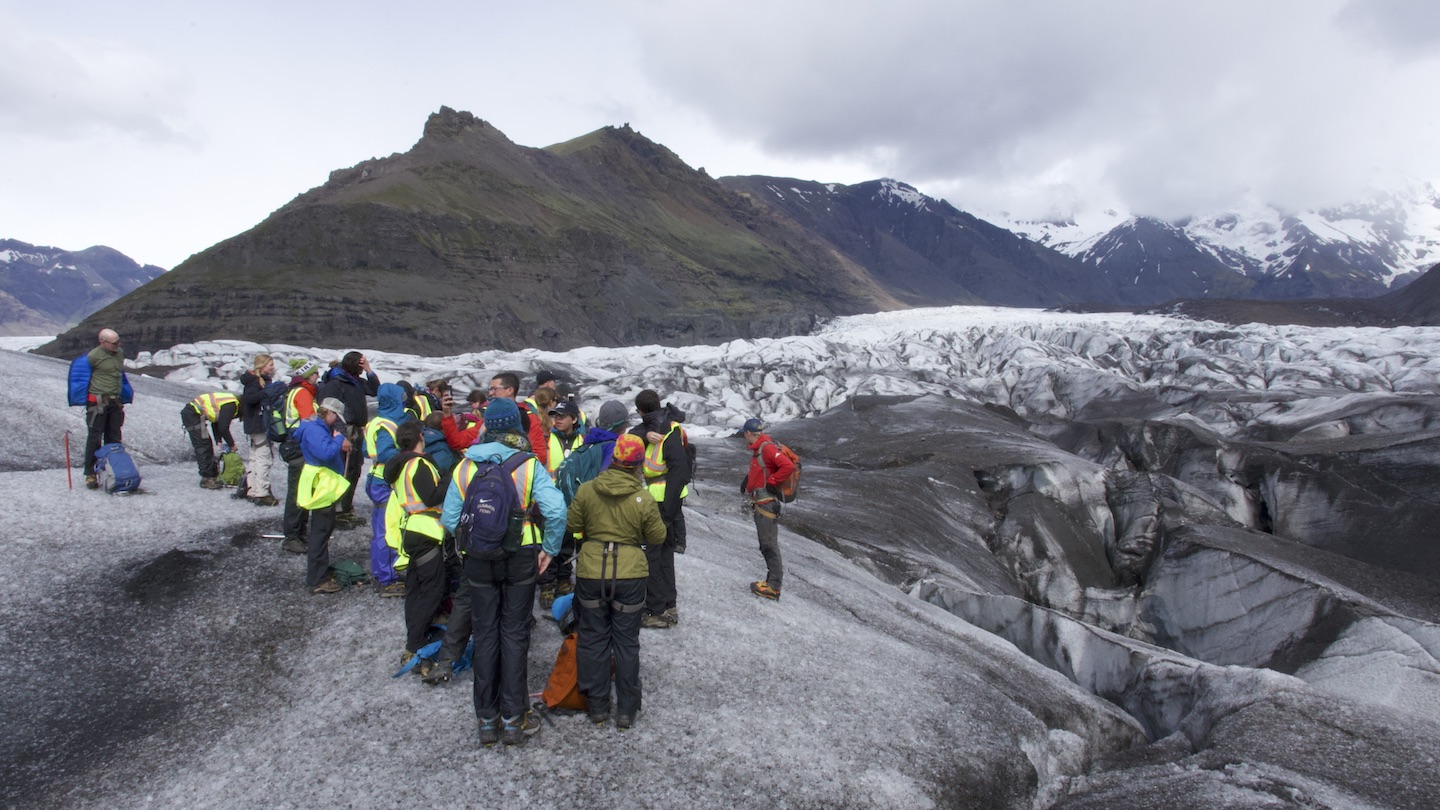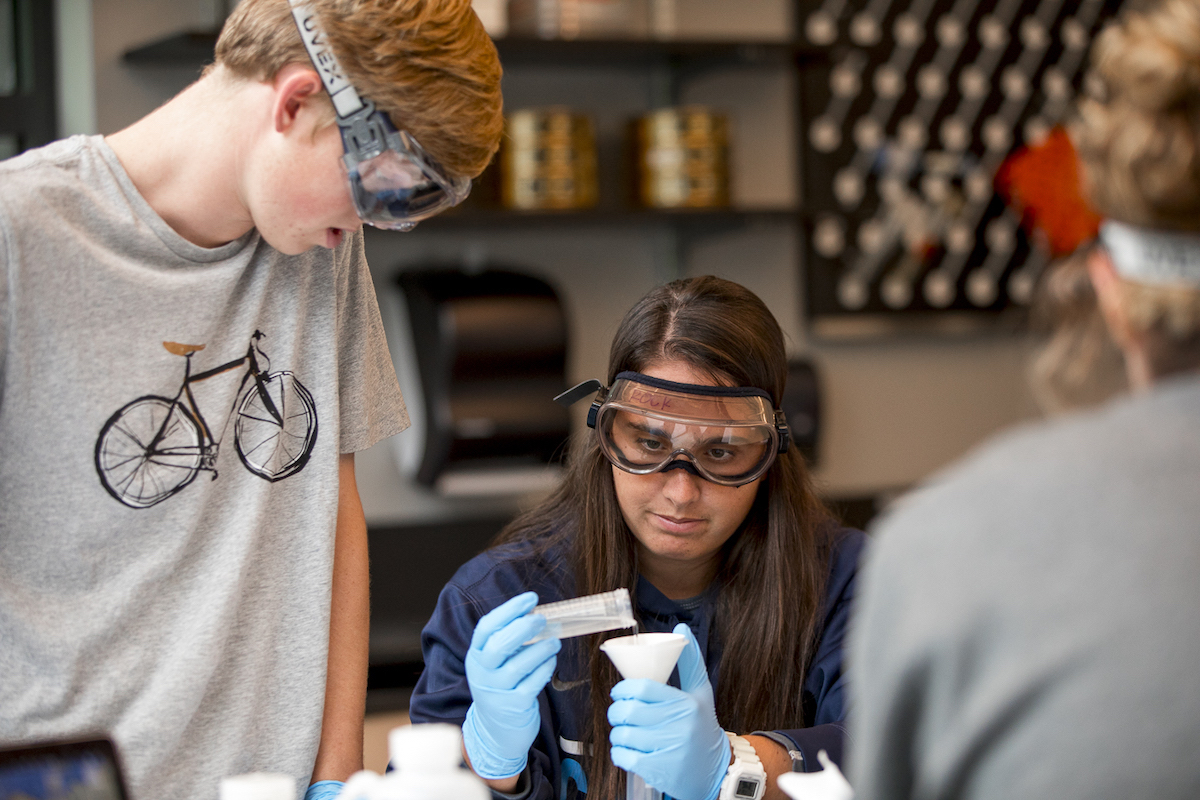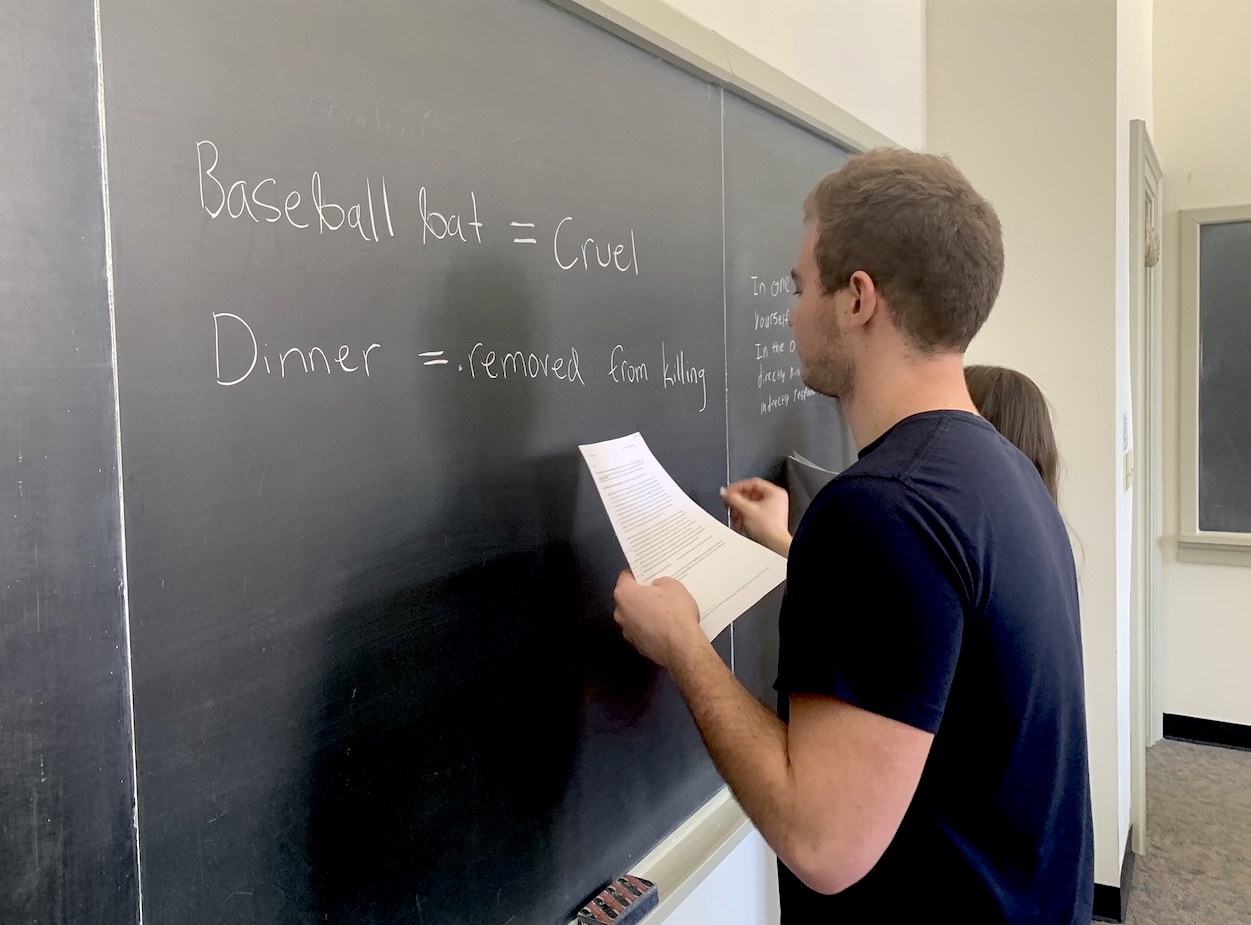Climate Change Across Disciplines: A Liberal Arts Approach
By Rebecca Goldfine
Many of Bowdoin's classes on climate cover the science of global warming, such as the earth and oceanographic science class Ocean and Climate. Others address inequality or social impacts, including the government course Earth Justice: Global Climate Change and Social Inequality and the digital and computational studies class Building Resilient Communities.
Yet whatever the focus of their class—carbon taxes, ocean dynamics, climate refugees, etc.—professors interviewed for this article acknowledged the weightiness of the subject and, frankly, how overwhelming it can be for students. Climate change and its impacts loom large and uncertain, and young people will be tasked with designing and implementing many of the changes in store.
Collin Roesler, professor of earth and oceanographic studies, said she emphasizes problem-solving in her oceanography classes and labs. "If you want people to enter the world with new ideas and excitement, you need to give them hope," she said.
Earth and Oceanographic Science: How is today's climate change different than a billion years ago?

But, regardless of whether his students are undergraduates or beyond their college years, Camill says he aims to help people make sense of the science behind climate change. "I want students to understand how the earth system works, in the present world and in the past, so they have the context about why modern climate change is happening and how it has happened throughout history," he says.
“How do we best prepare our students and society to think about their lives and their kids' lives and their grandkids' lives in a world that is going to be different than the world we're in now?”
—— Phil Camill
By the end of his courses, students discover that, while we are heading toward a world similar to known hothouse climates in the past, the rate of modern warming appears to be geologically unprecedented.
Camill says he teaches students to discern between what is natural and what is human-caused, so they can be better judges of information they encounter in the news or in a politician's stump talk. "I want them to be informed in a way that is going to help them evaluate the complex mix of ideas—and counter-ideas—that are floating around out there," he says.
Philosophy: Are individuals morally obligated to tackle climate change?
“I hope to prepare students to better able to participate in debates and not shy away from value judgments that must be made about what counts as a harm: harm to the environment, harm to animals, harm to species, harm to future lives.”
—— Kristi Olson
During one of her recent Ethics of Climate Change class sessions, Assistant Professor of Philosophy Kristi Olson presented her students with these statistics: Agricultural production accounts for more than 20 percent of greenhouse gas emissions; of those emissions, livestock production accounts for 80 percent.
Olson also asked her students to discuss the ethical questions those figures evoke—including the morality of allowing animals to suffer for our dietary pleasure, and whether it makes a difference if we directly or indirectly cause harm to the animal.
Vegetarianism is just one subject of many on Olson's syllabus; readings and classes cover nuclear energy, green taxes, climate engineering, population control, and much more. "Climate change is possibly the most important issue students will face in their lifetimes," said Olson. "From my perspective, it dominates anything you could talk about in environmental ethics."

The class often returns to the question of one's moral responsibility to take action beyond "voting green or writing letters to politicians," a decision that hinges on the questions of whether we as individuals are causing harm and if so, what kind of harm, Olson said.
Olson said she hopes to prepare her students to be "better able to participate in debates and not shy away from value judgments that must be made about what counts as a harm: harm to the environment, harm to animals, harm to species, harm to future lives," she said.
Phil 2359/ENVS 2459: The Ethics of Climate Change
Read the course syllabus
English: Can poetry save the world?
One of the obstacles to understanding and responding to climate change is that it is happening at such vast scales of time and space. English professor Samia Rahimtoola said poetry can help us imagine these scales, bringing the uncanny and unknowable within reach.
This spring, Rahimtoola is teaching Ecopoetics: Poetry and the Environment. Among other objectives, the class examines poetry as a wellspring for new ways of thinking about the environment and looks at the link between poetry and activism.
For one assignment, Rahimtoola asks students to write a documentary poem. Documentary poetry samples languages and speech, much like an artist who uses found objects or a musician who remixes songs. Students are asked to engage with scientific data, perhaps from NOAA or the EPA, to compose poems that inevitably end up humanizing environmental crises.
One of the documentary poems the class reads, Juliana Spahr's N 40° 41' 5" W 73° 58' 8 Unnamed Dragonfly Species, particularly resonates with students, Rahimtoola said, because it's about a group of people "who care about the world but can't get a grasp on what is happening."

"This poem is about the emotional toll, the feelings of frustration, curiosity, and apathy that come with being overwhelmed by information about something you know should matter and does matter," she said. She added that such "poems model ways of paying attention to environmental devastation we might otherwise wish to look away from."
Another eco-poem the class studies, Ed Roberson's To See the Earth Before the End of the World, compares the world's end with the screeching halt of a train and the falling of a plane from the sky.
"That is what poetry can do it," Rahimtoola said. "It can take metaphors and give us a way to think about this condition we're in, to translate what feels vast and mind-numbing into something we can understand."
Economics: How viable are the most cost-efficient climate policies?
“In this class, I gained the language to speak about the economic damage of climate change and a knowledge of the economic tools we could use to mitigate these costs. ”
—— Martha Boben ’19, earth and oceanographic science major
In the fall, Erik Nelson taught a new course called Institutional Approaches to Climate Change, in which his class analyzed how private companies, governments, utilities—and even Bowdoin—are tackling or could be tackling climate change.
The students looked at different mechanisms for dealing with the issue, from carbon taxes and cap-and-trade policies to regulations, evaluating not just the policies' possible economic effects, but also their potential political fallout.
In fortuitous timing, students had the chance to study a real-world policy debacle after France hiked up its carbon tax on gasoline, fueling nationwide protests. "We spoke in class about the importance of setting up a carbon tax in a way that considers who pays the tax and who benefits from the revenue of the tax increase," Nelson said.
While economists may have the leisure of theorizing about which policy would achieve maximum efficiency for the lowest cost, in reality, policy makers need to consider impacts on equity, Nelson said.
"If your goal is to reduce the amount the climate will change, you want to be able to reach that target in such a way that economies will still grow, people will still feel happy and satisfied, countries will still continue to develop, and more people will come out of extreme poverty," he said.
ECON 2219/ENVS 2351: Institutional Approaches to Climate Change
Read the course syllabus
Biology: Getting a mile-high vantage on a global problem
“The scope of the class is pretty wide, but the goal is to be able to discuss all the major issues, you want to tie all the elements together at a liberal arts college. That is what the students are looking for.”
—— Dave Carlon
Dave Carlon's Understanding Climate Change course starts off with the physical science of climate change—ocean dynamics, atmospheric science, and historical data. Though the class targets nonscience majors, Carlon assigns students primary literature from academic journals."Some of these papers are very difficult, but that is part of the problem," he said. "The communication of the climate change research, from the making of the science to the interpretation, is super important." Political agendas can lead to the distortion of facts, he pointed out, making scientific literacy an important skill for citizens.
The class also examines how different ecosystems and species, "including humans and bacteria," are responding to climate change. "I cover three themes: species migrate, adapt, or go extinct," Carlon said.

The last section of the class deals with politics and solutions. Students study climate policies of the US and other nations, and also investigate international treaties.
Each semester the class is offered, it attracts broad interest across campus. While Carlon doesn't shy from difficult subjects in his courses, he also doesn't want to dampen his students' idealism. "I don't pull any punches when it comes to predictions and the hard world we're moving into," he said. "But if you don't have optimism, what do you have? We need the students to have that sense that they can do something."